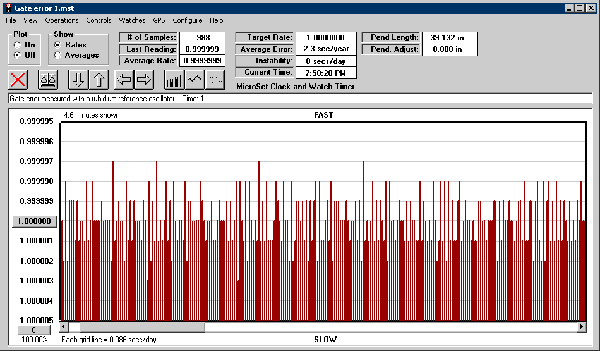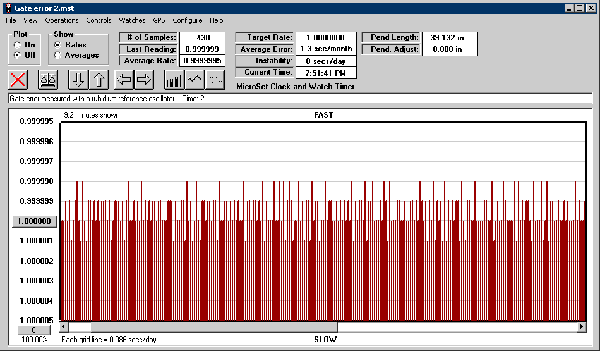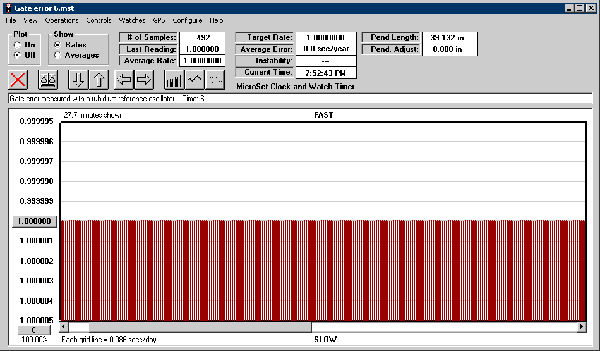|
Measuring Clocks and Watches
Sources of Errors
When measuring clocks and watches, or anything else, for that matter, you must always be aware of the limits of your measurements. Often, the errors are smaller than the required accuracy. For example, the repairman working on a common American shelf clock doesn’t need to worry about how much ambient light is shining on his optical sensor. But for critical measurements, these things can matter. We’ve already talked about a few sources of error, including errors associated with the sensors and errors within the timebase. There is another systematic error that should be considered for delicate measurements, and this is called “gate error”. This refers to the fact that there is some delay in responding to the sensor signals. In MicroSet, a microprocessor is used to time the clock, display the results, and communicate with a personal computer. This is a flexible approach that lets the timer make many different kinds of measurements. But the timer is running a program, and each step in the program takes a finite amount of time. So when the sensor signal comes in to begin or end a measurement, the software may not respond immediately. In MicroSet, this results in a “gate error” of about three microseconds for a each measurement interval. If you configure the timer to measure one beat of a precision pendulum, any reading could be off by up to three microseconds. This graph shows the gate error in MicroSet. The timer was configured to measure every pulse from a rubidium reference oscillator. Every reading should be exactly one second. But the readings vary by plus and minus three microseconds. But the gate error stays the same no matter how many beats you measure. As you measure more beats in each reading, the gate error becomes a smaller percentage of each beat. In this graph, MicroSet is measuring two beats from the rubidium reference. The gate error is still three microseconds, but it’s now shared by two beats. The graph shows the average length of each beat, and the readings now vary by just two microseconds. When the number of beats measured is higher than six, the gate error is divided down to less than one microsecond per beat and disappears from the readings. In this graph, MicroSet is measuring six beats from the rubidium oscillator, and each reading correctly shows exactly one second. For most measurements gate error is not a problem because most measurements that require accuracy of a single microsecond span more than six beats of the clock. But if you have occasion to measure very short intervals at very high precision, it needs to be considered.
|


